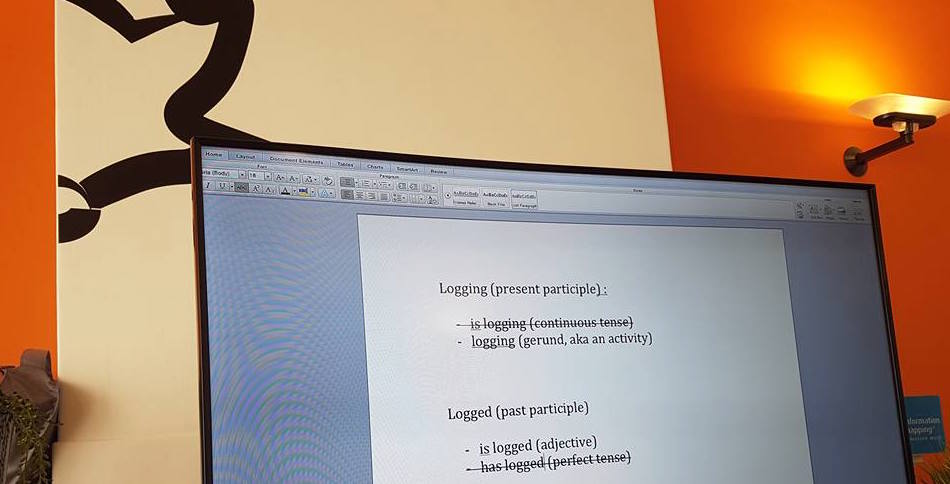Not just a standard for maintenance documentation only
On 25 January 2017, Issue 7 of the ASD-STE100 was renamed ‘International specification for the preparation of maintenance technical documentation in a controlled language’. Now, given the success and adaptability of Simplified Technical English (STE) across industries, this long overdue name change is a very much welcomed move. Indeed, STE writing principles are very valid for all technical documentation purposes.
On 20 and 21 February 2017 Shufrans TechDocs & FOXIZ became the first companies worldwide to jointly offer a certified ASD-STE100 training workshop using Issue 7.
Naturally, a cake celebration was called for after writers worked so very hard on their STE rewriting assignments. 2017 coincides with my 11th year of using the ASD-STE100 Specification, although I had hoped for an earlier release date in 2016 to mark a decade of my technical writing career
Followed this course last February and truly learned a lot. Shumin is very experienced and really knows what she is talking / teaching about. Recommended for all manual writers!
– Hans Harlé, Entecst Technical Communication
20% fewer rules in Issue 7!
Here are some of my observations: Seemingly overlapping writing rules were either removed or combined with others. The results? A 20% decrease in the number of writing rules from 65 to 53. Before you get the wrong idea, the message of STE did not change, it only crystallised. What transpired during those four years since the older issue in 2013 was a major overhaul where rules were succinctly rephrased and cleverly reorganised.
Every rule now includes a comprehensive description and explanation. Sentence examples were revised to facilitate a more progressive and concise understanding, coupled with an accurate use of this technical English writing standard.
A reduced learning curve
As a controlled language, STE writing rules and its core vocabulary (or general dictionary) of words work hand in hand to facilitate your authoring process. While the rules regulate the words and which parts of speech you can use, the dictionary provides you with a generous resource of technical words. This core vocabulary of around 930 approved words lets you write just about everything that you need for technical documentation, even for procedural information in general. However, this isn’t quite the end of my story yet.
Every dictionary entry is marked either as an approved or non-approved term. In the case of a non-approved word, one or more possible synonyms are provided to help the writer transition from Standard English to Simplified English. Approved synonyms and associated sentence examples will provide him with the ideas that will be difficult to think of all by himself. The revised layout and formatting in Issue 7 also makes it a lot easier to locate keywords and identify relevant examples speedily.
In recent versions of the ASD-STE100 specification issues 5, 6, and 7, we find that between 95 to 99% of the words in the STE general dictionary can be easily adapted even for technology companies, like the technical aspects of data protection solutions. And the concept of the STE specification is such that you can very easily adapt the specification to suit and cover your specific needs. It mainly entails additions to the dictionary which are customarily made, even for aerospace customers.
Enslaved to only 1,000 words or less? No way!
STE encompasses three main categories of words that technical writers can avail themselves of:
- Approved words from the general dictionary
- Technical names
- Technical verbs.
Technical names and verbs are word categories where organisations and writers can enjoy a considerable degree of autonomy using STE guidelines for customer-specific terms, most of them are known as technical names. Technical names are mainly nouns that you need in order to write meaningful content about your specific product or services. They are not included in the dictionary because terminology differs from one industry to the other. To manage this unpredictability, STE provides lists of 19 categories for nouns (Rule 1.5 of Issue 7), and four categories for verbs (Rule 1.12 of Issue 7). I am happy to report that the STE Maintenance Group has since reviewed and enriched those lists in Issue 7. You will not do away with most of your product-specific terminology. However, STE principles will help you regulate and filter it. I strongly encourage technical communicator in any field to hold onto this specification as a highly valuable resource!
About the trainer
Since 2006, Ms Shumin Chen has been working as a consultant with customers in various industries worldwide: aerospace and defence, banking, consumer products, healthcare, IT, medical and fitness equipment. She has helped many companies with their documentation needs, based on standards where possible, and is widely regarded as a leading expert in ASD-STE100 Simplified Technical English training, aviation documentation, and multilingual documentation.
Ms Chen now heads the ASD-STE100 training arm of Shufrans TechDocs. In her current role, Ms Chen continues to focus on the practical implementation of international standards to facilitate the efficient creation and management of multilingual documentation.
Copyright © 2017 Shufrans TechDocs. All rights reserved. No part of this article may be reproduced or transmitted in any form or by any means whatsoever without express written permission from the author, except in the case of brief quotations embodied in critical articles and reviews.





